Introduction
In an era where electricity efficiency is paramount, understanding the electricity consumption of everyday household appliances is crucial.
One such appliance that often gets overlooked is the fan.
Despite its ubiquity, many of us are unaware of how much electricity our fans consume and how this impacts our environment and our wallets.
This article aims to shed light on this topic, helping you make informed decisions about your electricity use.
Understanding Electricity Efficiency
Electricity efficiency refers to the ability of a device to perform a function using the least amount of electricity.
It’s a concept that’s becoming increasingly important as we strive to reduce our carbon footprint and save on electricity costs.
In the context of household appliances, an electricity-efficient device not only reduces the burden on our planet’s resources but also results in significant cost savings for the user.
The more efficiently an appliance can perform its function, the less electricity it consumes, and the less it costs to run.
Electricity efficiency is not just about saving money, though that is a significant benefit.
It’s also about reducing our reliance on fossil fuels and moving towards more sustainable sources of electricity.
By using electricity more efficiently, we can help to reduce the demand for electricity, which in turn can help to reduce the amount of electricity that needs to be produced.
This can have a significant impact on our environment, as the production of electricity, particularly from fossil fuels, is one of the main contributors to global warming.
Electricity Efficiency of Fans
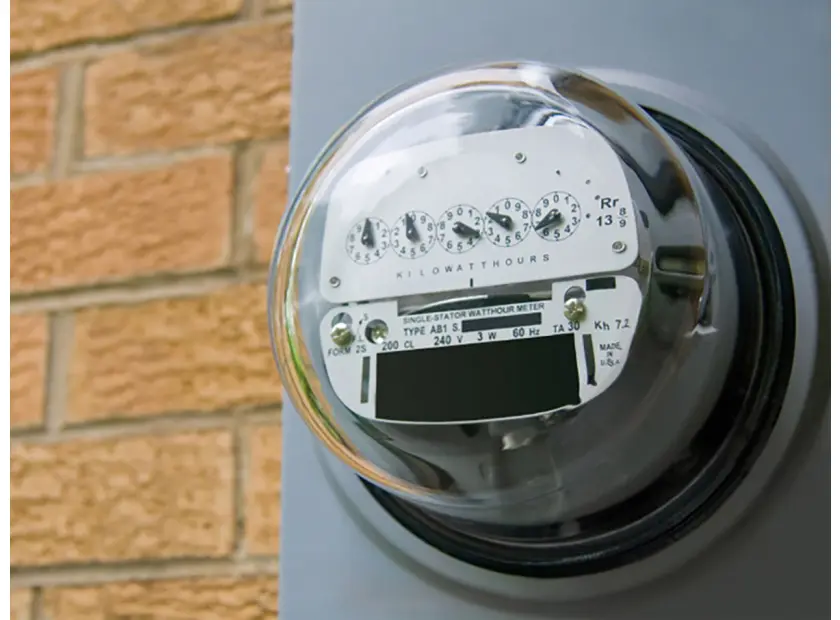
Fans are generally considered electricity-efficient appliances.
This is because they consume less power compared to other cooling devices like air conditioners.
The electricity consumption of a fan depends on its wattage and the hours of operation.
For instance, a ceiling fan typically uses between 15 to 75 watts, while a box fan uses between 50 to 100 watts.
This is significantly less than an air conditioner, which can consume anywhere from 500 to 3500 watts.
The reason why fans are more electricity-efficient than air conditioners is that they work in a fundamentally different way.
Air conditioners remove heat from the air and expel it outside, which requires a lot of electricity.
Fans, on the other hand, work by moving air around, which creates a wind chill effect that can make you feel cooler without actually reducing the temperature of the air.
This process requires much less electricity, which is why fans are a more electricity-efficient way to cool down than air conditioners.
Types of Fans and Their Electricity Consumption
Different types of fans consume different amounts of electricity.
Here’s a breakdown of the electricity consumption of various types of fans:
| Type of Fan | Electricity Consumption (Watts) | Electricity Consumption (kWh for 8 hours) | Cost (assuming $0.12 per kWh) |
| Ceiling Fan | 15 – 75 watts | 0.12 – 0.6 kWh | $0.0144 – $0.072 |
| Box Fan | 50 – 100 watts | 0.4 – 0.8 kWh | $0.048 – $0.096 |
| Tower Fan | 40 – 70 watts | 0.32 – 0.56 kWh | $0.0384 – $0.0672 |
| Pedestal Fan | 50 – 75 watts | 0.4 – 0.6 kWh | $0.048 – $0.072 |
| Table Fan | 10 – 25 watts | 0.08 – 0.2 kWh | $0.0096 – $0.024 |
| Floor/Wall Fan | 50 – 100 watts | 0.4 – 0.8 kWh | $0.048 – $0.096 |
| Compact/USB Fan | 2 – 6 watts | 0.016 – 0.048 kWh | $0.00192 – $0.00576 |
Ceiling Fans
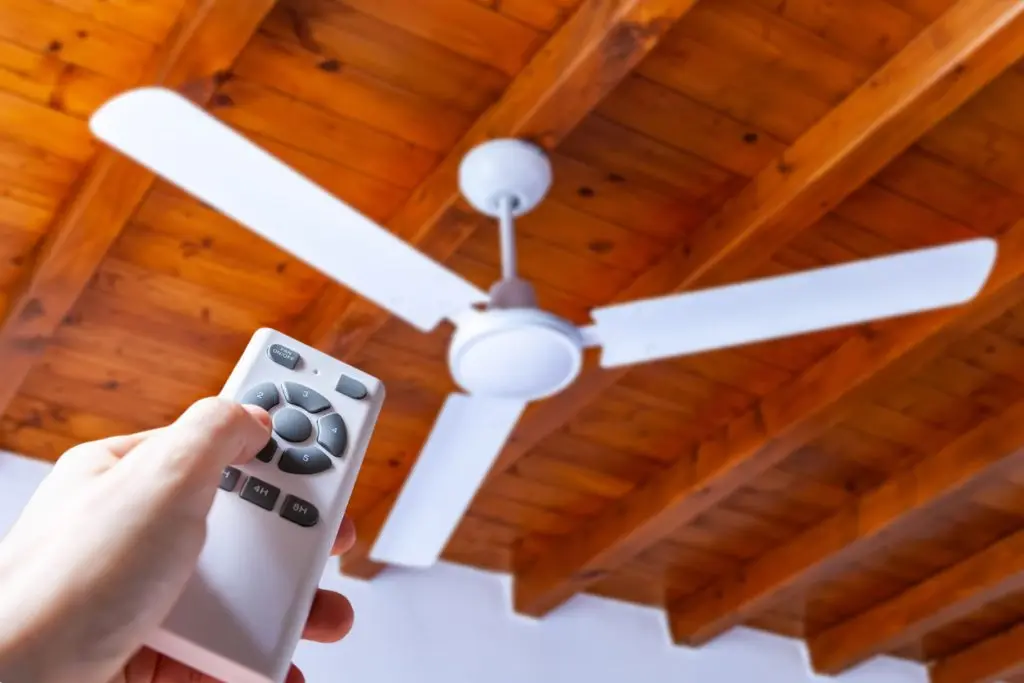
Ceiling fans are a common sight in many homes.
They are designed to circulate air in a room, providing a cooling effect.
Depending on their size and speed settings, ceiling fans can use between 15 to 75 watts of electricity.
Ceiling fans are particularly effective in rooms with high ceilings, as they can help to circulate the warm air that rises to the ceiling back down to where people are.
They can also be used in conjunction with air conditioners to help distribute the cool air more evenly throughout the room, which can make the air conditioner more effective and reduce the amount of electricity it needs to use.
Box Fans
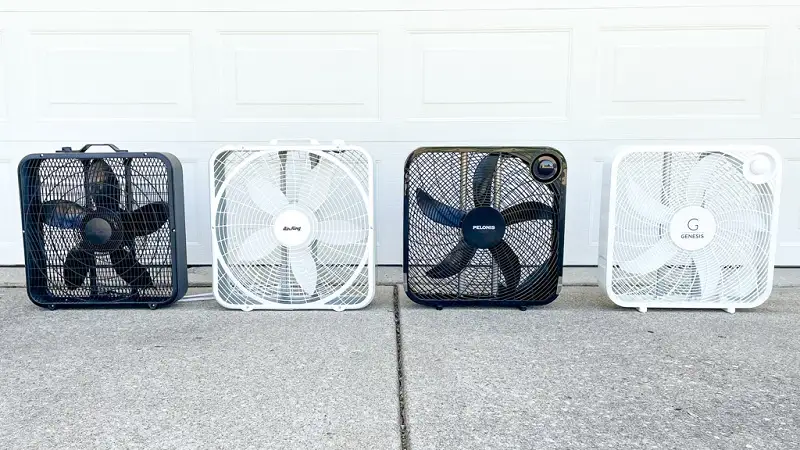
Box fans are portable and versatile.
They can be placed in different locations as needed, providing targeted cooling.
They typically consume between 50 to 100 watts of electricity.
Box fans are particularly useful in situations where you need to cool down a specific area or create a cross breeze.
For example, you can place a box fan in a window to help draw in cool air from outside, or you can use it to help circulate air in a room that doesn’t have good natural ventilation.
Tower Fans
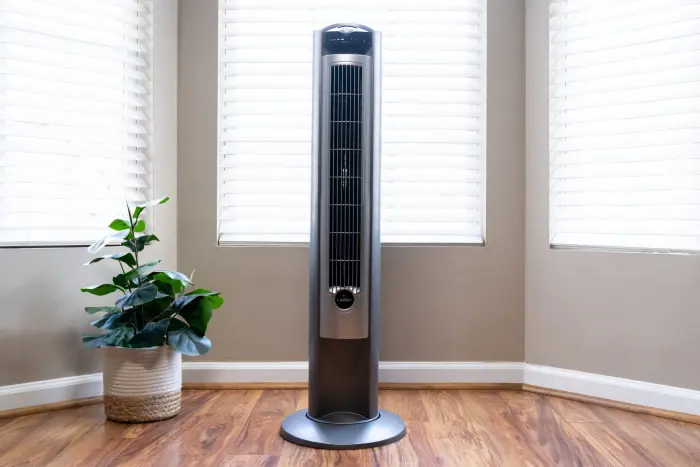
Tower fans are tall, slim, and space-efficient.
They oscillate to distribute air evenly throughout the room.
Generally, tower fans consume between 40 to 70 watts of electricity.
Tower fans are a great option for rooms where space is at a premium, as they take up very little floor space.
They are also often quieter than other types of fans, which can make them a good choice for bedrooms or offices.
Pedestal Fans
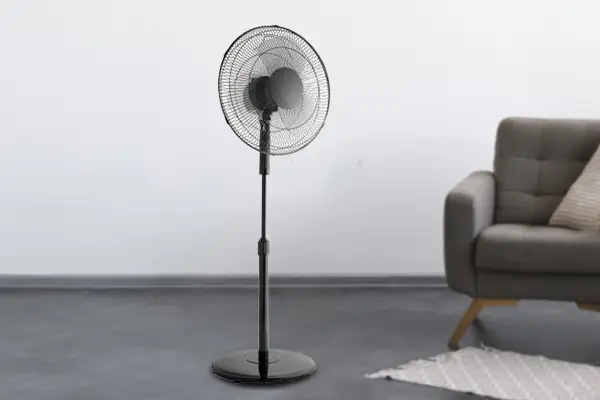
Pedestal fans, also known as stand fans, are mounted on a tall post and can be adjusted to different heights.
They typically use between 50 to 75 watts of electricity.
Pedestal fans are a good choice for larger rooms, as they can move a lot of air and help to cool down a large area.
They are also a good option for rooms where you need to direct the airflow at a specific height, as the height of the fan can be easily adjusted.
Table Fans
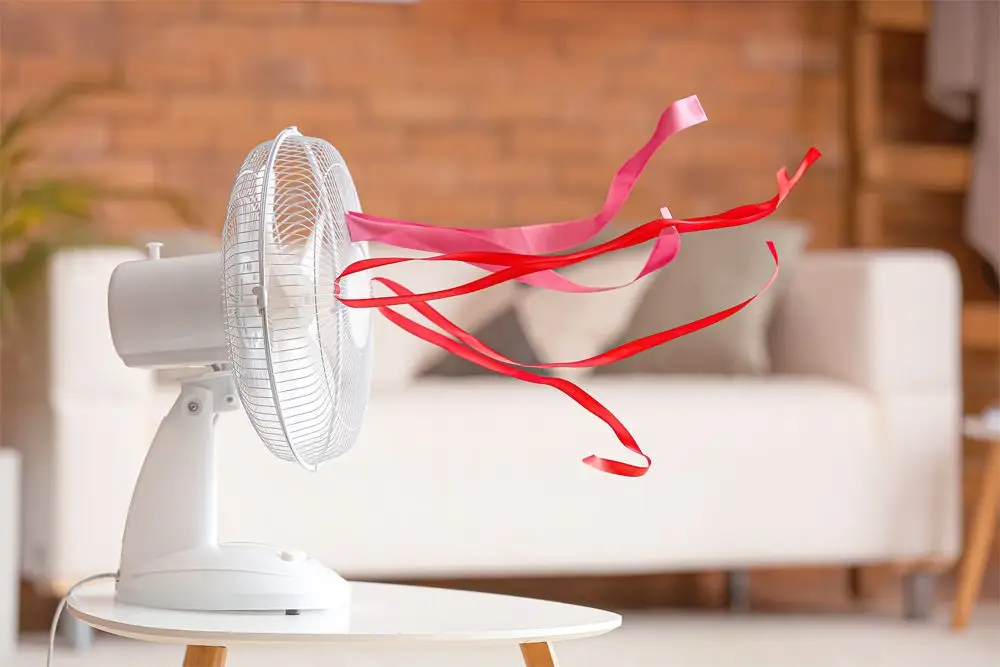
Table fans are compact and ideal for personal use or small spaces.
They typically consume between 10 to 25 watts of electricity, making them one of the most electricity-efficient fan types.
Table fans are a great option for personal cooling, as they can be placed on a desk or table and directed at the person who needs cooling.
They are also a good choice for small rooms or spaces where a larger fan would be too powerful.
Floor/Wall Fans
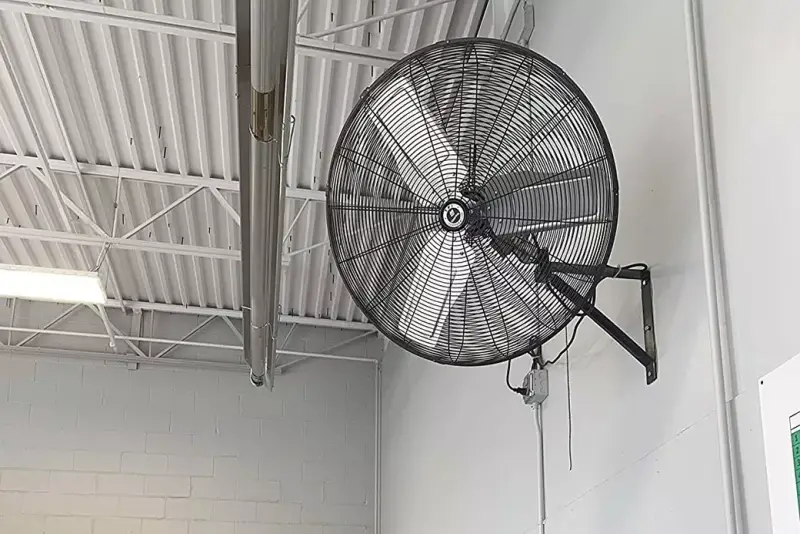
Floor fans or wall fans are versatile and can provide powerful airflow.
They are often used in larger spaces and typically consume between 50 to 100 watts of electricity.
Floor and wall fans are a good choice for workshops, garages, and other large spaces where you need to move a lot of air.
They can also be used to help dry out wet areas, as they can help to evaporate water more quickly.
Compact/USB Fans

Compact or USB fans are small, portable fans that can be powered via a USB connection.
They are perfect for personal use, especially in office settings or for travel.
These fans are extremely electricity-efficient, consuming only about 2 to 6 watts of electricity.
Compact and USB fans are a great option for personal cooling when you’re on the go.
They can be powered by a laptop, a power bank, or any other device with a USB port, making them extremely versatile.
Factors Affecting Fan Electricity Consumption
The electricity consumption of a fan is influenced by several factors.
Here are some of the key factors:
Size of the Fan
The size of the fan plays a significant role in its electricity consumption.
Larger fans require more electricity to move their blades and circulate air.
This is because a larger blade requires more electricity to move, and a larger motor is needed to drive the blades.
Therefore, it’s important to choose a fan that’s the right size for your needs.
A fan that’s too large for a room will consume more electricity than necessary, while a fan that’s too small may not provide adequate cooling.
Speed Settings
The speed at which a fan operates also affects its electricity usage.
Fans running at higher speeds consume more electricity.
This is because the motor has to work harder to spin the blades faster, which requires more electricity.
Therefore, adjusting the fan speed to the lowest setting that still provides adequate cooling can help to reduce electricity consumption.
Duration of Use
The length of time a fan is used directly impacts its electricity consumption.
The longer a fan is in operation, the more electricity it uses.
This is because the fan’s motor is continuously drawing power while the fan is running.
Therefore, turning off the fan when it’s not needed can help to save electricity.
This table shows that larger fans and higher speed settings consume more energy.
| Fan Size (Diameter in inches) | Speed Setting | Duration of Use (Hours per day) | Energy Consumption (Watts) | Energy Consumption (kWh for 8 hours) | Cost (assuming $0.12 per kWh) |
|---|---|---|---|---|---|
| 36″ (Small) | Low | 4 | 20 | 0.08 kWh | $0.0096 |
| 36″ (Small) | Medium | 4 | 30 | 0.12 kWh | $0.0144 |
| 36″ (Small) | High | 4 | 40 | 0.16 kWh | $0.0192 |
| 48″ (Medium) | Low | 6 | 40 | 0.24 kWh | $0.0288 |
| 48″ (Medium) | Medium | 6 | 60 | 0.36 kWh | $0.0432 |
| 48″ (Medium) | High | 6 | 75 | 0.45 kWh | $0.054 |
| 56″ (Large) | Low | 8 | 60 | 0.48 kWh | $0.0576 |
| 56″ (Large) | Medium | 8 | 90 | 0.72 kWh | $0.0864 |
| 56″ (Large) | High | 8 | 120 | 0.96 kWh | $0.1152 |
Please note that these numbers are just estimates and the actual energy consumption can vary depending on the specific model of the fan and other factors.
Fan vs. Air Conditioner Electricity Consumption
When compared to air conditioners, fans consume significantly less electricity.
For example, a central air conditioning unit can use between 3000 to 5000 watts per hour, while a ceiling fan uses about 15 to 120 watts per hour.
However, it’s important to note that while fans use less electricity, they do not cool the air like air conditioners.
They work by creating a wind-chill effect, making you feel cooler by accelerating the evaporation of sweat from your skin.
Here’s a comparison of the electricity consumption of fans and air conditioners:
| Appliance | Electricity Consumption (Watts) | Electricity Consumption (kWh for 8 hours) | Cost (assuming $0.12 per kWh) |
| Ceiling Fan | 15 – 120 watts | 0.12 – 0.96 kWh | $0.0144 – $0.1152 |
| Central Air Conditioner | 3000 – 5000 watts | 24 – 40 kWh | $2.88 – $4.8 |
While fans consume less electricity than air conditioners, it’s important to remember that they also provide a different type of cooling.
Air conditioners cool the air by removing heat, while fans cool people by helping to evaporate sweat from their skin.
Therefore, the effectiveness of a fan can depend on the humidity level in the room.
In a very humid environment, a fan may not provide much cooling, as the air is already saturated with moisture and cannot absorb much more from your skin.
Cost of Running Fans
The cost of running a fan depends on its electricity consumption and the cost of electricity.
For instance, if a fan uses 75 watts and runs for 8 hours a day, it would consume 0.6 kWh per day.
If the cost of electricity is $0.12 per kWh, running the fan for a day would be about $0.072.
While the cost of running a fan may seem small, it can add up over time.
For example, if you run a fan for 8 hours a day, every day for a year, it could cost you anywhere from around $5 to $30 per year, depending on the wattage of the fan and the cost of electricity.
Therefore, it’s important to consider the electricity consumption of a fan when deciding whether to use a fan or an air conditioner for cooling.
Reducing Your Fan’s Power Consumption
There are several ways to reduce the power consumption of your fan:
Use Electricity-Efficient Fans
Some fans are designed to be more electricity-efficient than others.
Look for fans with electricity-saving features such as variable speed settings, timers, and electricity-saving modes.
These features can help to reduce the fan’s electricity consumption by allowing you to adjust the fan’s operation to your needs.
Use the Right Size Fan for the Room
Using a fan that’s too large for a room can result in unnecessary electricity consumption.
Choose a fan that’s the right size for the space.
A fan that’s too small may not provide adequate cooling, while a fan that’s too large may consume more electricity than necessary.
Maintain Your Fan Regularly
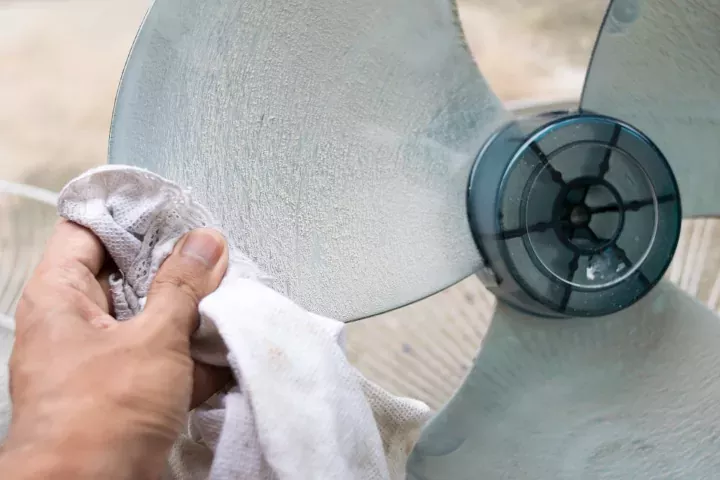
Regular maintenance can help your fan operate more efficiently.
This includes cleaning the blades and ensuring the motor is in good working condition.
Dust and dirt on the fan blades can reduce the fan’s efficiency, causing it to use more electricity.
Similarly, a poorly maintained motor can also increase electricity consumption.
Use Fans Strategically
The location and use of your fan can also affect its electricity consumption.
For example, placing a fan in a window can help to draw in cool air from outside, reducing the need for air conditioning.
Similarly, using a fan to circulate air in a room can help to distribute heat more evenly, reducing the need for heating in the winter.
Electricity Saving Tips When Using Fans
Turning Off Fans in Unoccupied Rooms
Fans cool people, not rooms.
Therefore, it’s recommended to turn off fans in unoccupied rooms to save electricity.
This is because fans work by helping to evaporate sweat from your skin, which cools you down.
If there’s no one in the room, the fan isn’t cooling anyone down, and it’s just using electricity.
Using Fans with Air Conditioners
Using fans in conjunction with air conditioners can allow you to raise the thermostat setting on the air conditioner, saving electricity while still maintaining comfort.
The fan can help distribute the cool air more evenly and create a wind-chill effect, which can make the room feel cooler than it actually is.
Use Fans During Cooler Times of the Day
If the weather is cool enough, you can use fans instead of air conditioners, especially during the cooler times of the day.
This can significantly reduce your electricity consumption.
Adjust the Fan Speed
Adjust the fan speed according to your needs.
Using the fan at a lower speed can save more electricity.
Use Ceiling Fans in Reverse During Winter
In the winter, you can use your ceiling fan in reverse (clockwise direction) to circulate warm air that has risen to the ceiling back down to the floor.
This can help to heat your home more efficiently and reduce your heating costs.
The Environmental Impact of Using Fans
Using fans instead of air conditioners can significantly reduce your carbon footprint.
This is because fans consume less electricity, and therefore, result in fewer greenhouse gas emissions.
Remember, every kilowatt-hour of electricity saved translates to a reduction in carbon emissions.
By choosing to use a fan instead of an air conditioner, you’re not only saving money, but you’re also contributing to a healthier planet.
Conclusion
Fans are a cost-effective and environmentally friendly way to stay cool.
They consume significantly less energy than air conditioners, making them a more sustainable choice for cooling. However, it’s important to use fans wisely and efficiently to maximize their benefits.
This includes choosing the right size fan for the room, using energy-efficient fans, maintaining your fan regularly, and using fans strategically to optimize their cooling effect.
By doing so, you can stay cool while also reducing your energy consumption, saving money, and contributing to a healthier planet.
Frequently Asked Questions
Q1: How can I calculate the electricity consumption of my fan?
A: You can calculate the electricity consumption of your fan by multiplying its wattage by the number of hours you use it.
This will give you electricity consumption in watt-hours.
To convert this to kilowatt-hours (kWh), which is the unit used by most electricity companies, divide the result by 1000.
Q2: Are there any other types of fans that are more electricity-efficient?
A: Yes, there are several types of fans that are designed to be more electricity-efficient.
These include DC fans, which use a direct current motor that is more efficient than the standard AC motor used in most fans.
There are also fans with electricity-saving features such as variable speed settings, timers, and electricity-saving modes.
Q3: Can the electricity consumption of a fan increase over time?
A: Yes, the electricity consumption of a fan can increase over time if it is not properly maintained.
Dust and dirt on the fan blades can reduce the fan’s efficiency, causing it to use more electricity.
Similarly, a poorly maintained motor can also increase electricity consumption.
Q4: Can I use a fan to help heat my home in the winter?
A: Yes, you can use a ceiling fan to help heat your home in the winter.
By running the fan in reverse (clockwise direction), you can circulate warm air that has risen to the ceiling back down to the floor.
This can help to heat your home more efficiently and reduce your heating costs.
Q5: How does the electricity consumption of a fan compare to other household appliances?
A: Compared to other household appliances, fans are relatively low in electricity consumption.
For example, a refrigerator can use between 100 to 400 watts, a washing machine can use between 500 to 1500 watts, and a computer can use between 100 to 800 watts.
In contrast, a typical fan uses between 10 to 100 watts, depending on the type and size of the fan.
Q6: How can I reduce the electricity consumption of my fan without compromising on comfort?
A: There are several ways to reduce the electricity consumption of your fan without compromising on comfort.
These include using the fan at a lower speed, using the fan only when necessary, and using the fan in conjunction with other cooling methods such as natural ventilation or air conditioning.
Q7: Are there any electricity-efficient alternatives to fans for cooling?
A: Yes, there are several electricity-efficient alternatives to fans for cooling.
These include evaporative coolers, which use the natural process of evaporation to cool the air, and air conditioners with a high electricity efficiency ratio (EER) or seasonal electricity efficiency ratio (SEER).
However, these alternatives may not be suitable for all climates or situations.

